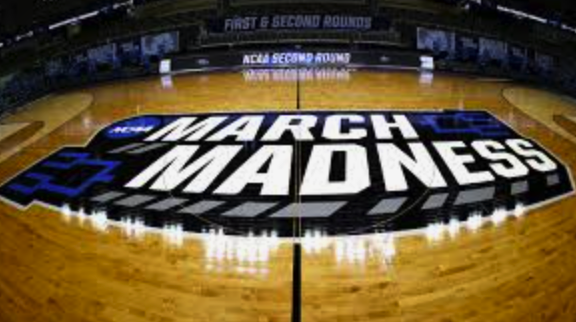Team USA delivers world-class performances at 2022 Beijing Winter Olympics
Although the 2022 Beijing Olympics have come to an end, the legacy of this showcase event will last a lifetime.
After 17 days of competition, the 2022 Beijing Winter Olympics came to a close on Sunday, Feb. 20. Competing against over 2,900 athletes from over 91 different nations, Team USA’s 225 athletes delivered incredible performances and won an impressive 25 medals– eight gold, ten silver, and seven bronze–in individual and team events. In all, 57 USA athletes earned medals, helping Team USA finish with the fourth most medals overall for the Winter Olympics.
As well as contributing to the country’s impressive medal count, Team USA showcased incredible resilience and sportsmanship throughout the games. Delivering world-class performances, American athletes tackled obstacles, displayed determination, and represented the country with passion on the international stage.
Winning 13 of the country’s 25 total medals, Team USA’s women tore through their competition from start to finish, dominating a difficult Olympic Games. Julia Marino started off the Olympics with a bang, earning Team USA’s first medal on Feb. 6 with a silver medal in snowboard slopestyle. Toward the end of the games, Jessie Diggins closed out the Olympics for Team USA with a silver medal finish in the women’s cross-country skiing 30-kilometer mass start free. Not only did she win the United States its 25th medal, she also became the first American woman to medal in an Olympic long-distance cross-country race.
While winning medals, Team USA broke many records throughout their stay in Beijing. At 40 years, 57 days, Nick Baumgartner became the oldest snowboarder to medal at an Olympic Winter Games, when he won the mixed team snowboard cross event. At 36 years, 177 days, Baumgartner’s teammate, Lindsey Jacobellis, became the oldest woman and second oldest Olympic snowboard medalist with her gold-place finish in the mixed team and women’s snowboard cross events.
On the slopes, one of snowboarding’s most iconic figures and five-time Olympian, Shaun White, finished fourth in his last competitive snowboard halfpipe contest. His final run ended a legendary career that includes a remarkable three gold medals, the most won by any snowboarder. White’s career extends outside of the Olympics as well. With the world record for the most X Games gold medals, White cemented his status as a snowboarding icon in the recent Olympic games. Admired by many for his technical skills and confidence on the halfpipe, White’s legacy and career will leave a lasting imprint on the snowboarding community.
This year’s Olympics saw an impressive increase in representation, specifically regarding people of color. Trailblazer and bobsledder Elana Meyers Taylor won a bronze and silver medal in the two-woman bobsled event and in the single women “monobob” event. These two wins made Taylor the most decorated Black athlete at a Winter Games with a combined five medals. Furthermore, she was also selected to be the opening and closing ceremony flag bearer, an incredible honor that has only been bestowed upon one other American athlete.
“It’s very inspiring to see Black representation amongst medal winners and I am proud of the progression we have made,” said sophomore Mia Heath. “It gives me hope for the future of black athletes.”
Elana Meyer Taylor got to share the spotlight when speedskater Erin Jackson won in the women’s 500-meter speed skating event, making her the first Black woman ever to win a gold medal at an individual event in the Winter Games.
“It’s really inspiring to see Black Americans like Erin Jackson winning gold medals,” said sophomore Ryan McFadden. “So often there are stereotypes that Black athletes are only fast and good at basketball, but we are so much more than that. It’s refreshing to see that Erin Jackson is a representation of what we can be.”
Similarly, Asian Americans made headlines this year, breaking multiple records and representing Team USA on the podium numerous times. Chloe Kim, an Asian American snowboarder became the first woman to win back-to-back gold medals in the Olympic snowboard halfpipe event. Kim became the first athlete ever to win all four major snowboarding titles, including the Olympics, Worlds, X Games, and the Youth Olympics. In fact, Kim became the youngest ever athlete to win Olympic gold in snowboarding after she claimed the halfpipe event at PyeongChang in 2018. On her very first run, Kim scored an impressive 94.00 points, which ultimately secured her gold. Other Asian American athletes also found success in Beijing. After a heartbreaking stumble at PyeongChang in 2018, Asian American free skater Nathan Chen looked to reclaim his reputation this year in Beijing. After earning a world record of 113.97 points, Chen secured gold with his electric skating performance to Elton John’s “Rocketman.”
“Seeing athletes like Chloe Kim and Nathan Chen winning gold in the Olympics is really nice to see and is inspiring for all Asian Americans,” said sophomore Kate Quigley. “It really puts Asian American athletes in a good spotlight and pushes past racial stereotypes. Seeing a representation of multiple different cultures resonates well and is encouraging to aspiring young athletes all over the world.”
However, putting on a world-class performance while the whole world watches is no easy task, and often the immense pressure Olympic athletes face is dismissed by the press. Senior Gigi Johnson, who swam in the US Summer Olympic trials in June 2021, emphasized the incredible amount of stress placed on the athletes, often unnoticed by the public.
“One thing a lot of people don’t know about is the amount of pressure that goes into it,” said Gigi. “This year there has been a lot of hate on social media regarding the individuals on the Olympic team, for example, if they fall in figure skating or wipe out during skiing events. The people who make these comments don’t know the amount of pressure being put on the athletes and have never had to compete at world levels. In addition to the amount of pressure being put on the athletes by the press, athletes also put a great deal of pressure on their own shoulders.”
Not only are the Olympic athletes held to high standards, but so are the facilities, in this case, Beijing. Spending billions of dollars on hosting an Olympics has become less appealing to many countries around the world. Yet, China still seized the opportunity, as the country relies heavily on the investments, created by the Olympics, to build railway lines, highways, and other infrastructure, increasing the workforce for their citizens and minimizing the costs of transportation. China also looks to nurture an interest in winter sports and increase consumer spending, specifically in the economically struggling northeast region.
Originally, China set a $3 billion budget for the Olympic games, a figure that was expected to cover the cost of venues. However, new plans to build a $1 billion rail line and $5 billion expressway came to fruition. Furthermore, unexpected fees accumulated due to Covid-19. Covid testing and extra precautions added an additional layer of spending, causing the country to need even more funds. However, by canceling the welcoming ceremony for foreign visitors and limiting the torch relay to a short three days, China was able to save funds. Although many of the venues used during the Olympics had already been built during the Summer Olympics in 2008, China still spent an estimated $8.8 billion on the Winter Games.
The 2022 Winter Olympics in Beijing was an incredible culmination of hard work, determination, investment, and resilience. Athletes from all over the world have risen to the occasion and produced golden moments certain to leave a lasting impact in the world of winter sports. Team USA represented all people of the country well and proved that the United States is home to some of the best athletes in the world.


